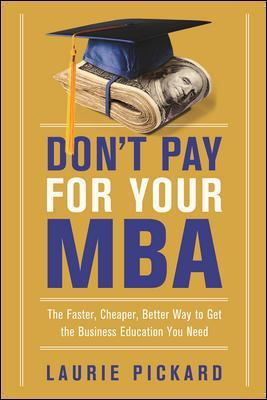Risk-Return Analysis Volume 3
 portes grátis
portes grátis
Risk-Return Analysis Volume 3
Markowitz, Harry M.
McGraw-Hill Education - Europe
07/2020
336
Dura
Inglês
9780071818315
15 a 20 dias
558
Descrição não disponível.
Preface
The Rational Decision Maker
Words of Wisdom
John von Neumann
Acknowledgments
13. Predecessors
Introduction
Rene Descartes
There Is No "Is," Only "Was" and "Will Be"
Working Hypotheses
RDM Reasoning
David Hume
Eudaimonia
Financial Economic Discoveries
Economic Analyses That Have Stood
the Test of Time
Constructive Skepticism
Isaac Newton, Philosopher
Fields Other Than Physics
Karl Popper
Mysticism
Caveats
Charles Peirce
Immanuel Kant
What an RDM Can Know A Priori
14. Deduction First Principles
Introduction
The Great Debate
One More Reason for Studying
Cantor's Set Theory
"Very Few Understood It"
Finite Cardinal Arithmetic
Relative Sizes of Finite Sets
Finite Ordinal Arithmetic
Standard Ordered Sets (SOSs)
Finite Cardinal and Ordinal Numbers
Cantor (101)
Theorem
Proof
Corollary
Proof
Transfinite Cardinal Numbers
The Continuum Hypothesis
Transfinite Cardinal Arithmetic
Lemma
Transfinite Ordinal Numbers
Examples of Well-Ordered and
Not Well-Ordered Sets
Transfinite Ordinal Arithmetic
Extended SOSs
Lemma
Proof
The Paradoxes (a.k.a. Antimonies)
Three Directions
From Aristotle to Hume to Hilbert
British Empiricism versus Continental
Rationalism
Who Created What?
Cantor Reconsidered
Brouwer's Objections
Axiomatic Set Theory
Peano's Axioms (PAs)
Hilbert's Programs
Whitehead and Russell
Zermelo's Axioms
The "Axiom of Choice"
The Trichotomy Equivalent to the Axiom of Choice
Kurt Goedel (1906-1978)
Thoralf Skolem (1887-1863)
15. Logic is Programming is Logic
Introduction
Terminology
Number Systems and the EAS Structures
Built on Them
Deductive Systems as Programming Languages
A Variety of Deductive DSSs
Alternative Rules of Inference
"Ladders" and "Fire Escapes"
Organon 2000: From Ancient Greek
to "Symbolic Logic"
So, What's New?
Immediate Consequences
Two Types of Set Ownership
Modeling Modeling
EAS-E Deduction: Status
16. The Infinite and The Infinitesimal
Points and Lines
Fields
Constructing the Infinitesimals
Infinite-Dimensional Utility Analysis
The Algebraic Structure Called "A Field"
17. Induction Theory
Introduction
The Story Thus Far
Concepts
Basic Relationships
Examples
"Objective" Probability
The Formal M59 Model
Initial Consequences
Bayes's Rule
A Bayesian View of MVA
Judgment, Approximation and Axiom III
(1) A Philosophical Difference between
S54 and M59
Examples of Clearly "Objective" Probabilities"
Propositions about Propositions
A Problem with Axiom II
Are the ?j
Probabilities the Scaling of the ?j
?
The ?j
"Mix on a Par" with Objective Probabilities
18. Induction Practice
Introduction
R. A. Fisher and Neyman-Pearson Hypothesis Tests
The Likelihood Principle
Andrei Kolmogorov
A Model of Models
The R.A. Fisher Argument
Bayesian Conjugate Prior Procedures
19. Eudaimonia
Review
Eudaimonia for the Masses
Notes
References
Index
The Rational Decision Maker
Words of Wisdom
John von Neumann
Acknowledgments
13. Predecessors
Introduction
Rene Descartes
There Is No "Is," Only "Was" and "Will Be"
Working Hypotheses
RDM Reasoning
David Hume
Eudaimonia
Financial Economic Discoveries
Economic Analyses That Have Stood
the Test of Time
Constructive Skepticism
Isaac Newton, Philosopher
Fields Other Than Physics
Karl Popper
Mysticism
Caveats
Charles Peirce
Immanuel Kant
What an RDM Can Know A Priori
14. Deduction First Principles
Introduction
The Great Debate
One More Reason for Studying
Cantor's Set Theory
"Very Few Understood It"
Finite Cardinal Arithmetic
Relative Sizes of Finite Sets
Finite Ordinal Arithmetic
Standard Ordered Sets (SOSs)
Finite Cardinal and Ordinal Numbers
Cantor (101)
Theorem
Proof
Corollary
Proof
Transfinite Cardinal Numbers
The Continuum Hypothesis
Transfinite Cardinal Arithmetic
Lemma
Transfinite Ordinal Numbers
Examples of Well-Ordered and
Not Well-Ordered Sets
Transfinite Ordinal Arithmetic
Extended SOSs
Lemma
Proof
The Paradoxes (a.k.a. Antimonies)
Three Directions
From Aristotle to Hume to Hilbert
British Empiricism versus Continental
Rationalism
Who Created What?
Cantor Reconsidered
Brouwer's Objections
Axiomatic Set Theory
Peano's Axioms (PAs)
Hilbert's Programs
Whitehead and Russell
Zermelo's Axioms
The "Axiom of Choice"
The Trichotomy Equivalent to the Axiom of Choice
Kurt Goedel (1906-1978)
Thoralf Skolem (1887-1863)
15. Logic is Programming is Logic
Introduction
Terminology
Number Systems and the EAS Structures
Built on Them
Deductive Systems as Programming Languages
A Variety of Deductive DSSs
Alternative Rules of Inference
"Ladders" and "Fire Escapes"
Organon 2000: From Ancient Greek
to "Symbolic Logic"
So, What's New?
Immediate Consequences
Two Types of Set Ownership
Modeling Modeling
EAS-E Deduction: Status
16. The Infinite and The Infinitesimal
Points and Lines
Fields
Constructing the Infinitesimals
Infinite-Dimensional Utility Analysis
The Algebraic Structure Called "A Field"
17. Induction Theory
Introduction
The Story Thus Far
Concepts
Basic Relationships
Examples
"Objective" Probability
The Formal M59 Model
Initial Consequences
Bayes's Rule
A Bayesian View of MVA
Judgment, Approximation and Axiom III
(1) A Philosophical Difference between
S54 and M59
Examples of Clearly "Objective" Probabilities"
Propositions about Propositions
A Problem with Axiom II
Are the ?j
Probabilities the Scaling of the ?j
?
The ?j
"Mix on a Par" with Objective Probabilities
18. Induction Practice
Introduction
R. A. Fisher and Neyman-Pearson Hypothesis Tests
The Likelihood Principle
Andrei Kolmogorov
A Model of Models
The R.A. Fisher Argument
Bayesian Conjugate Prior Procedures
19. Eudaimonia
Review
Eudaimonia for the Masses
Notes
References
Index
Este título pertence ao(s) assunto(s) indicados(s). Para ver outros títulos clique no assunto desejado.
invest, investing, MPT, modern portfolio theory, manage, risk, diversify, allocation, stocks, bonds, securities, business, finance, risk management, economic theory, business and economics, economics, business investments, portfolio management, portfolios
Preface
The Rational Decision Maker
Words of Wisdom
John von Neumann
Acknowledgments
13. Predecessors
Introduction
Rene Descartes
There Is No "Is," Only "Was" and "Will Be"
Working Hypotheses
RDM Reasoning
David Hume
Eudaimonia
Financial Economic Discoveries
Economic Analyses That Have Stood
the Test of Time
Constructive Skepticism
Isaac Newton, Philosopher
Fields Other Than Physics
Karl Popper
Mysticism
Caveats
Charles Peirce
Immanuel Kant
What an RDM Can Know A Priori
14. Deduction First Principles
Introduction
The Great Debate
One More Reason for Studying
Cantor's Set Theory
"Very Few Understood It"
Finite Cardinal Arithmetic
Relative Sizes of Finite Sets
Finite Ordinal Arithmetic
Standard Ordered Sets (SOSs)
Finite Cardinal and Ordinal Numbers
Cantor (101)
Theorem
Proof
Corollary
Proof
Transfinite Cardinal Numbers
The Continuum Hypothesis
Transfinite Cardinal Arithmetic
Lemma
Transfinite Ordinal Numbers
Examples of Well-Ordered and
Not Well-Ordered Sets
Transfinite Ordinal Arithmetic
Extended SOSs
Lemma
Proof
The Paradoxes (a.k.a. Antimonies)
Three Directions
From Aristotle to Hume to Hilbert
British Empiricism versus Continental
Rationalism
Who Created What?
Cantor Reconsidered
Brouwer's Objections
Axiomatic Set Theory
Peano's Axioms (PAs)
Hilbert's Programs
Whitehead and Russell
Zermelo's Axioms
The "Axiom of Choice"
The Trichotomy Equivalent to the Axiom of Choice
Kurt Goedel (1906-1978)
Thoralf Skolem (1887-1863)
15. Logic is Programming is Logic
Introduction
Terminology
Number Systems and the EAS Structures
Built on Them
Deductive Systems as Programming Languages
A Variety of Deductive DSSs
Alternative Rules of Inference
"Ladders" and "Fire Escapes"
Organon 2000: From Ancient Greek
to "Symbolic Logic"
So, What's New?
Immediate Consequences
Two Types of Set Ownership
Modeling Modeling
EAS-E Deduction: Status
16. The Infinite and The Infinitesimal
Points and Lines
Fields
Constructing the Infinitesimals
Infinite-Dimensional Utility Analysis
The Algebraic Structure Called "A Field"
17. Induction Theory
Introduction
The Story Thus Far
Concepts
Basic Relationships
Examples
"Objective" Probability
The Formal M59 Model
Initial Consequences
Bayes's Rule
A Bayesian View of MVA
Judgment, Approximation and Axiom III
(1) A Philosophical Difference between
S54 and M59
Examples of Clearly "Objective" Probabilities"
Propositions about Propositions
A Problem with Axiom II
Are the ?j
Probabilities the Scaling of the ?j
?
The ?j
"Mix on a Par" with Objective Probabilities
18. Induction Practice
Introduction
R. A. Fisher and Neyman-Pearson Hypothesis Tests
The Likelihood Principle
Andrei Kolmogorov
A Model of Models
The R.A. Fisher Argument
Bayesian Conjugate Prior Procedures
19. Eudaimonia
Review
Eudaimonia for the Masses
Notes
References
Index
The Rational Decision Maker
Words of Wisdom
John von Neumann
Acknowledgments
13. Predecessors
Introduction
Rene Descartes
There Is No "Is," Only "Was" and "Will Be"
Working Hypotheses
RDM Reasoning
David Hume
Eudaimonia
Financial Economic Discoveries
Economic Analyses That Have Stood
the Test of Time
Constructive Skepticism
Isaac Newton, Philosopher
Fields Other Than Physics
Karl Popper
Mysticism
Caveats
Charles Peirce
Immanuel Kant
What an RDM Can Know A Priori
14. Deduction First Principles
Introduction
The Great Debate
One More Reason for Studying
Cantor's Set Theory
"Very Few Understood It"
Finite Cardinal Arithmetic
Relative Sizes of Finite Sets
Finite Ordinal Arithmetic
Standard Ordered Sets (SOSs)
Finite Cardinal and Ordinal Numbers
Cantor (101)
Theorem
Proof
Corollary
Proof
Transfinite Cardinal Numbers
The Continuum Hypothesis
Transfinite Cardinal Arithmetic
Lemma
Transfinite Ordinal Numbers
Examples of Well-Ordered and
Not Well-Ordered Sets
Transfinite Ordinal Arithmetic
Extended SOSs
Lemma
Proof
The Paradoxes (a.k.a. Antimonies)
Three Directions
From Aristotle to Hume to Hilbert
British Empiricism versus Continental
Rationalism
Who Created What?
Cantor Reconsidered
Brouwer's Objections
Axiomatic Set Theory
Peano's Axioms (PAs)
Hilbert's Programs
Whitehead and Russell
Zermelo's Axioms
The "Axiom of Choice"
The Trichotomy Equivalent to the Axiom of Choice
Kurt Goedel (1906-1978)
Thoralf Skolem (1887-1863)
15. Logic is Programming is Logic
Introduction
Terminology
Number Systems and the EAS Structures
Built on Them
Deductive Systems as Programming Languages
A Variety of Deductive DSSs
Alternative Rules of Inference
"Ladders" and "Fire Escapes"
Organon 2000: From Ancient Greek
to "Symbolic Logic"
So, What's New?
Immediate Consequences
Two Types of Set Ownership
Modeling Modeling
EAS-E Deduction: Status
16. The Infinite and The Infinitesimal
Points and Lines
Fields
Constructing the Infinitesimals
Infinite-Dimensional Utility Analysis
The Algebraic Structure Called "A Field"
17. Induction Theory
Introduction
The Story Thus Far
Concepts
Basic Relationships
Examples
"Objective" Probability
The Formal M59 Model
Initial Consequences
Bayes's Rule
A Bayesian View of MVA
Judgment, Approximation and Axiom III
(1) A Philosophical Difference between
S54 and M59
Examples of Clearly "Objective" Probabilities"
Propositions about Propositions
A Problem with Axiom II
Are the ?j
Probabilities the Scaling of the ?j
?
The ?j
"Mix on a Par" with Objective Probabilities
18. Induction Practice
Introduction
R. A. Fisher and Neyman-Pearson Hypothesis Tests
The Likelihood Principle
Andrei Kolmogorov
A Model of Models
The R.A. Fisher Argument
Bayesian Conjugate Prior Procedures
19. Eudaimonia
Review
Eudaimonia for the Masses
Notes
References
Index
Este título pertence ao(s) assunto(s) indicados(s). Para ver outros títulos clique no assunto desejado.




